Samsung S95D review: the zenith of OLED performance
Samsung's champion QD-OLED TV delivers a next-level performance

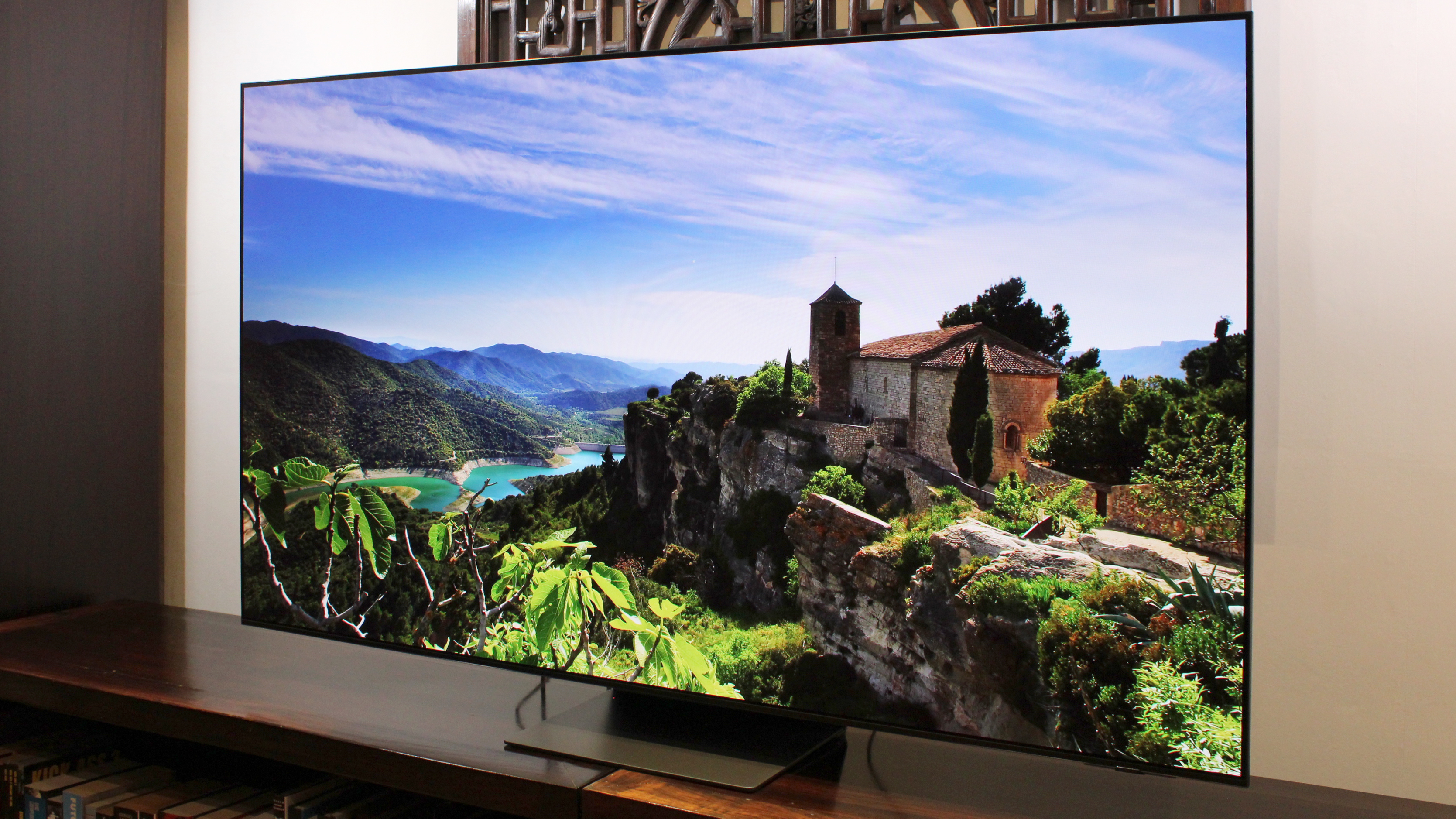

The Samsung S95D is, if you’ll pardon the pun, a quantum leap forward in OLED performance. The increased brightness, wider colours and improved tone mapping deliver some of the best HDR we’ve ever seen, and when combined with class-leading processing and exceptional image accuracy, the result is a superb 4K display that delivers an almost complete premium TV package.
-
+
Remarkable picture performance
-
+
Great anti-reflective screen
-
+
Comprehensive smart platform
-
+
Extensive gaming support
-
-
No Dolby Vision HDR
-
-
S90D is a cheaper temptation
Why you can trust T3

Samsung has built on the early success of its Quantum Dot (QD) OLED TV technology to elevate its position among the best TVs available today. The company's previous model, the S95C – replaced by the S95D, as on review here – increased the brightness, expanded the colours, improved the high dynamic range (HDR) tone mapping, and added a better screen filter.
The new S95D, however, takes all these existing strengths, but promises to push the boundaries of OLED by further increasing brightness and expanding colours, while also porting over the screen filter from Samsung’s Frame TV to negate reflections in a really meaningful way. Add an upgraded AI processor, improved HDR performance, and a tweaked smart system – does that equal the best OLED TV you'll be able to buy this year?
SAMSUNG S95D: PRICE & RELEASE DATE
Right now there's no official price or release date for the S95D series, but all ought to be revealed soon. All that's clear is the latest model comes in 55-, 65- (as reviewed) and 77-inch screen sizes without any need to negate the features list for the largest-scale model of the bunch.
For reference the S95C launched with the following pricing: 55-inch at £2,399 / $2,499 / AU$3,999; 65-inch at £3,599 / $3,299 / AU$4,999; and 77-inch at £5,099 / $4,499 / AU$7,999. The S95C ought to be in a similar ballpark, but don't be surprised if the asking price is yet higher thanks to the more advanced features (brightness and anti-reflective coating).
SAMSUNG S95D REVIEW: FEATURES & WHAT’S NEW
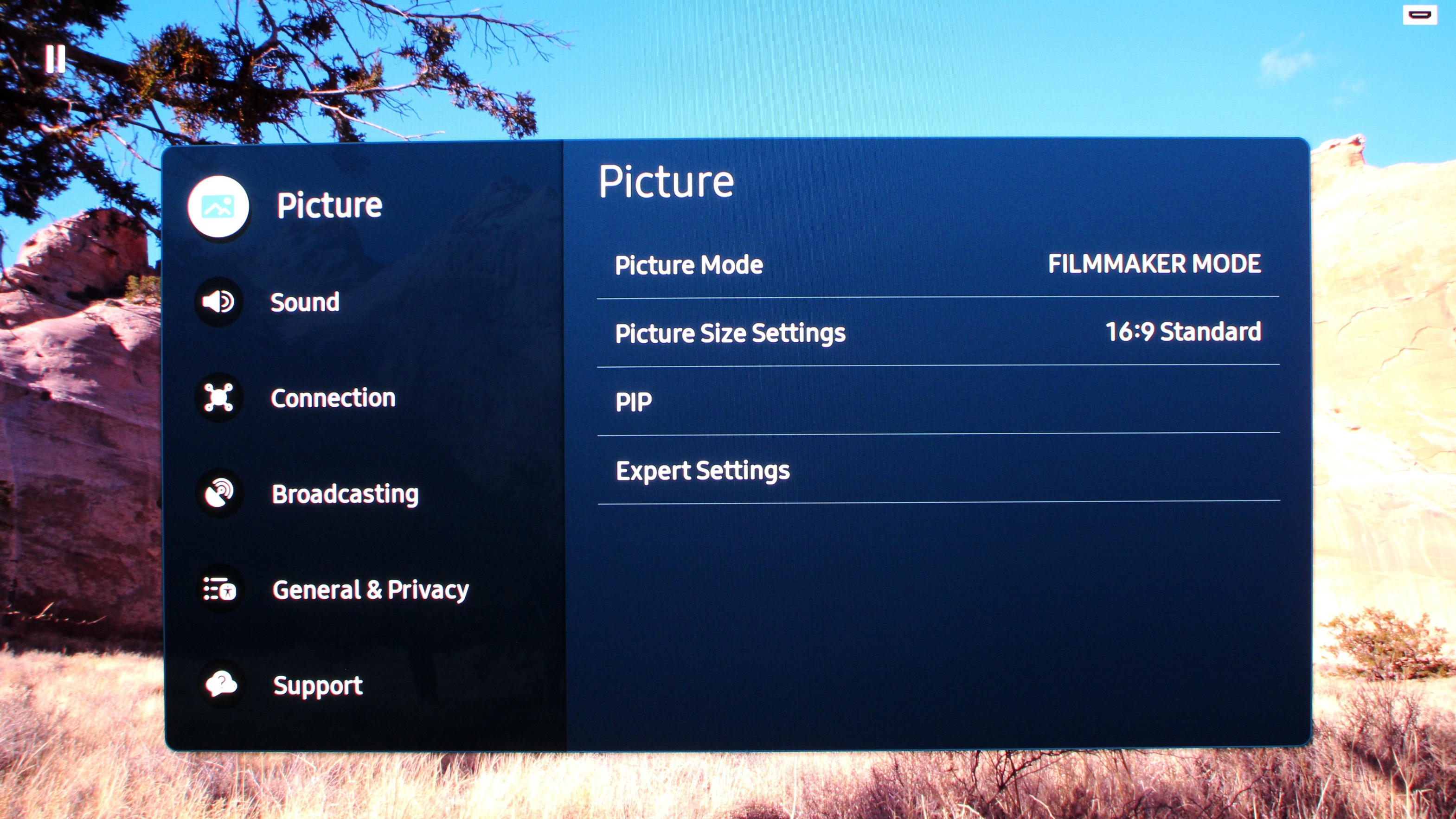
The Samsung S95D uses the latest Quantum Dot OLED (QD OLED) panel, which the brand claims increases the peak brightness by up to 20% and further widens the colour gamut. As a result, Samsung promises a previously unseen level of performance from an OLED TV.
The new ‘Glare Free’ screen filter is ported over from Samsung’s Frame TV, and uses an embossed surface with a special coating that diffuses light in multiple directions. The brand claims this new filter not only eliminates reflections but also improves perceived black levels (T3's Tech Editor first saw it at CES 2024 and was very impressed with the light-diffusing tech).
The tone mapping has also been improved this year, whether you’re using the Static or Active HDR settings. The former mode tracks the industry targets precisely to retain artistic intent, while the latter delivers brighter HDR without crushing blacks or losing detail in the highlights.
As with all OLED TVs, the optimal viewing angles are incredibly wide, while Samsung’s upgraded NQ4 AI Gen2 processor uses 20 individual neural networks and deep-learning algorithms to get the best out of any content – from highly compressed standard definition to native 4K material.
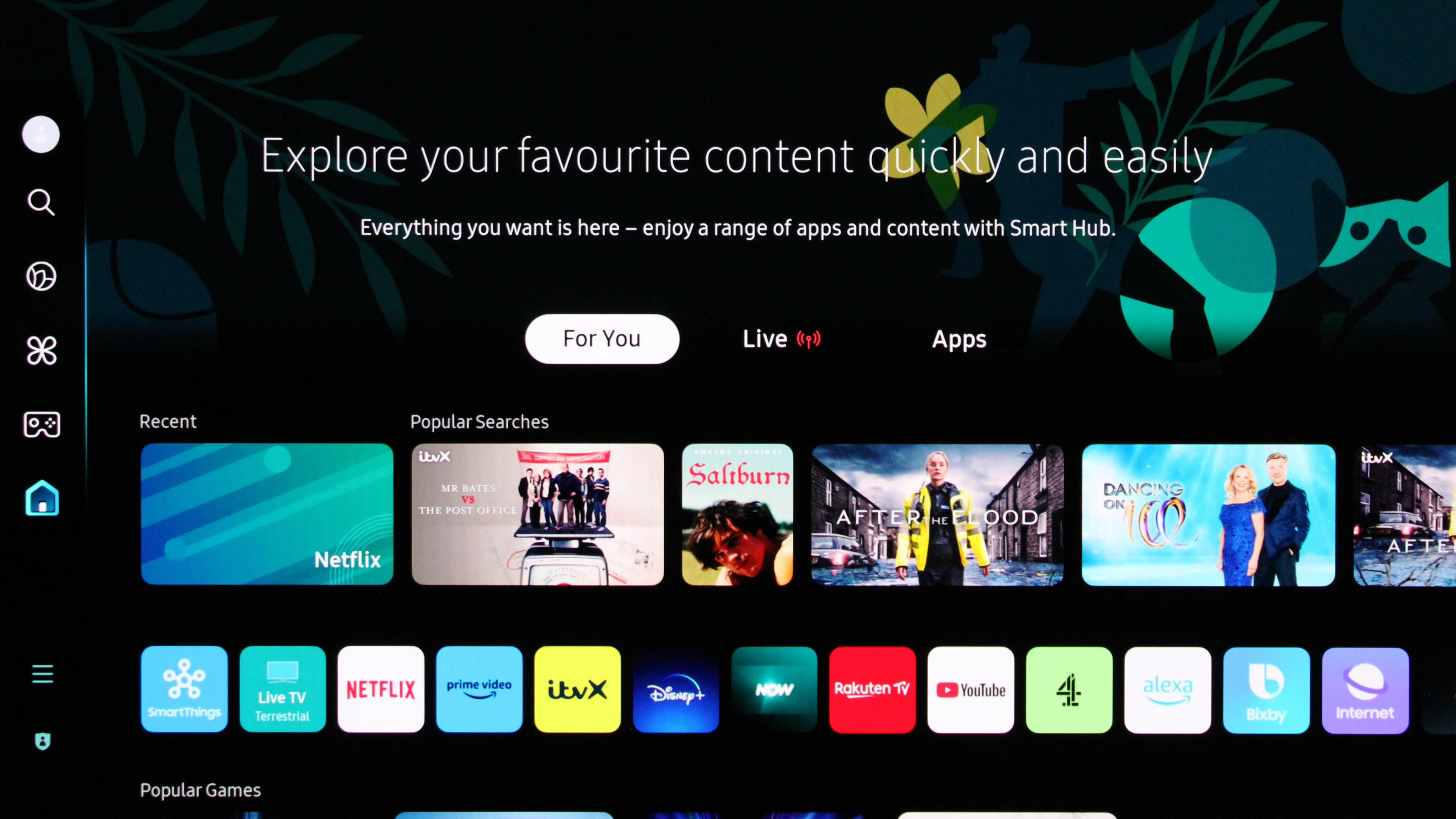
Samsung claims a peak brightness of 1,700 nits, which is brighter than most LCD TVs let alone OLEDs, and 123% of the DCI-P3 colour standard. The S95D supports HDR10, hybrid log-gamma (HLG) and HDR10+ (Adaptive and Gaming), but sadly Samsung still doesn’t support Dolby Vision (something we don't anticipate will ever happen).
However, Samsung does include Dolby Atmos decoding, while the company's Object Tracking Sound Plus system uses a 4.2.2-channel speaker layout with height drivers. There’s also Space Fit Sound for room correction, and Q Symphony for seamless integration with supporting Samsung soundbars.
The slim One Connect Box remains a useful proprietary innovation that offers tidier cable management away from the back of the TV itself. The four HDMI 2.1 inputs can all handle frame rates up to 144Hz, VRR (Freesync Premium Pro and, unofficially, Nvidia G-Sync), and ALLM, with a lag of 9.8ms, plus one supports eARC.
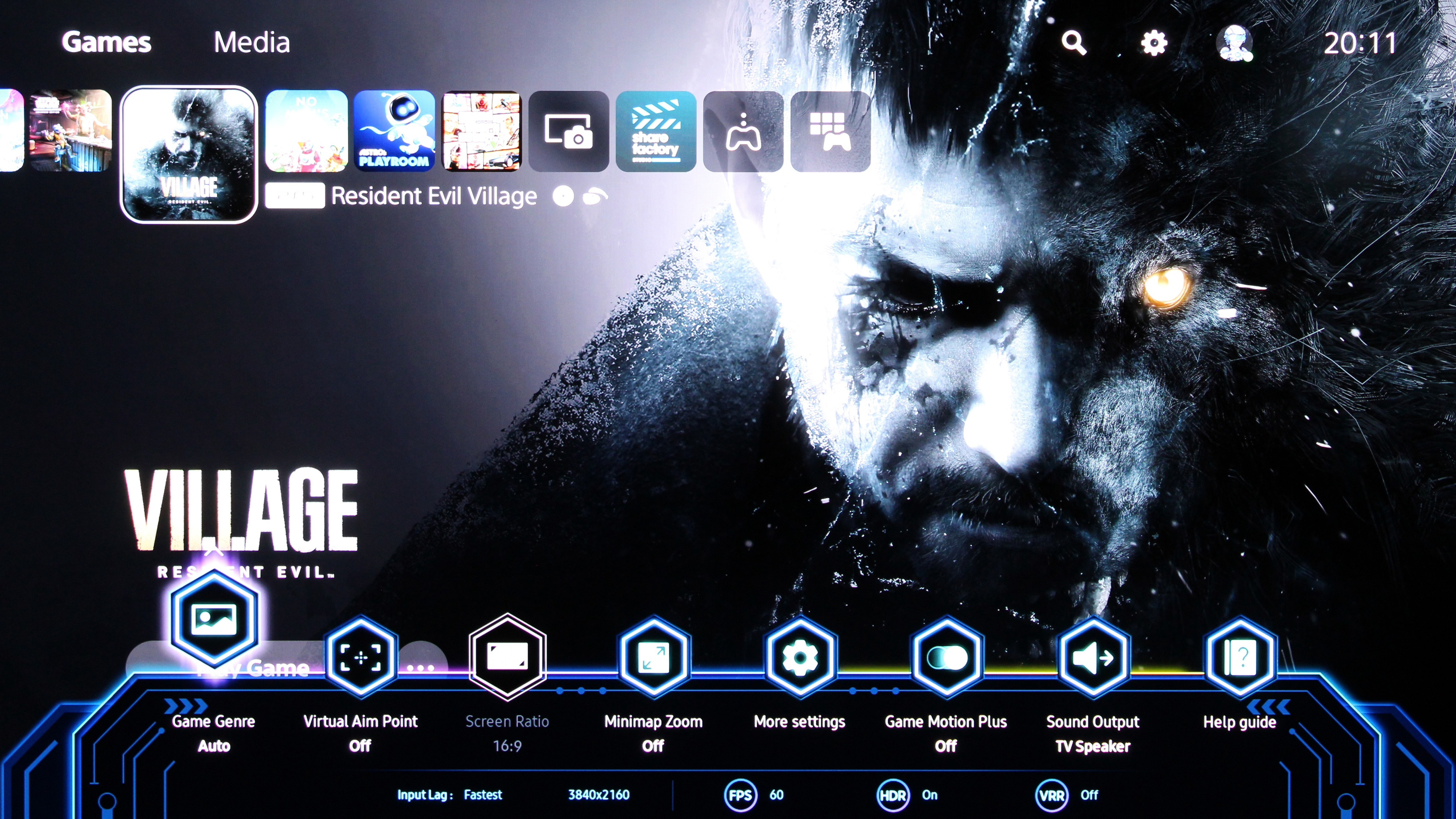
The handy Game Bar pops up to provide relevant information and dedicated settings, as well as key game-related menus that users can adjust to personalise their gaming experience. The new AI Auto Game mode allows the TV to select the correct setting for a specific type of game genre.
The Tizen-powered smart platform remains as comprehensive as ever, while the SmartThings app makes setup simple, and provides extensive control. The Bixby smart assistant is built-in, but the S95D also works with Alexa and you can access Siri thanks to support for Apple’s AirPlay 2.
SAMSUNG S95D REVIEW: PERFORMANCE
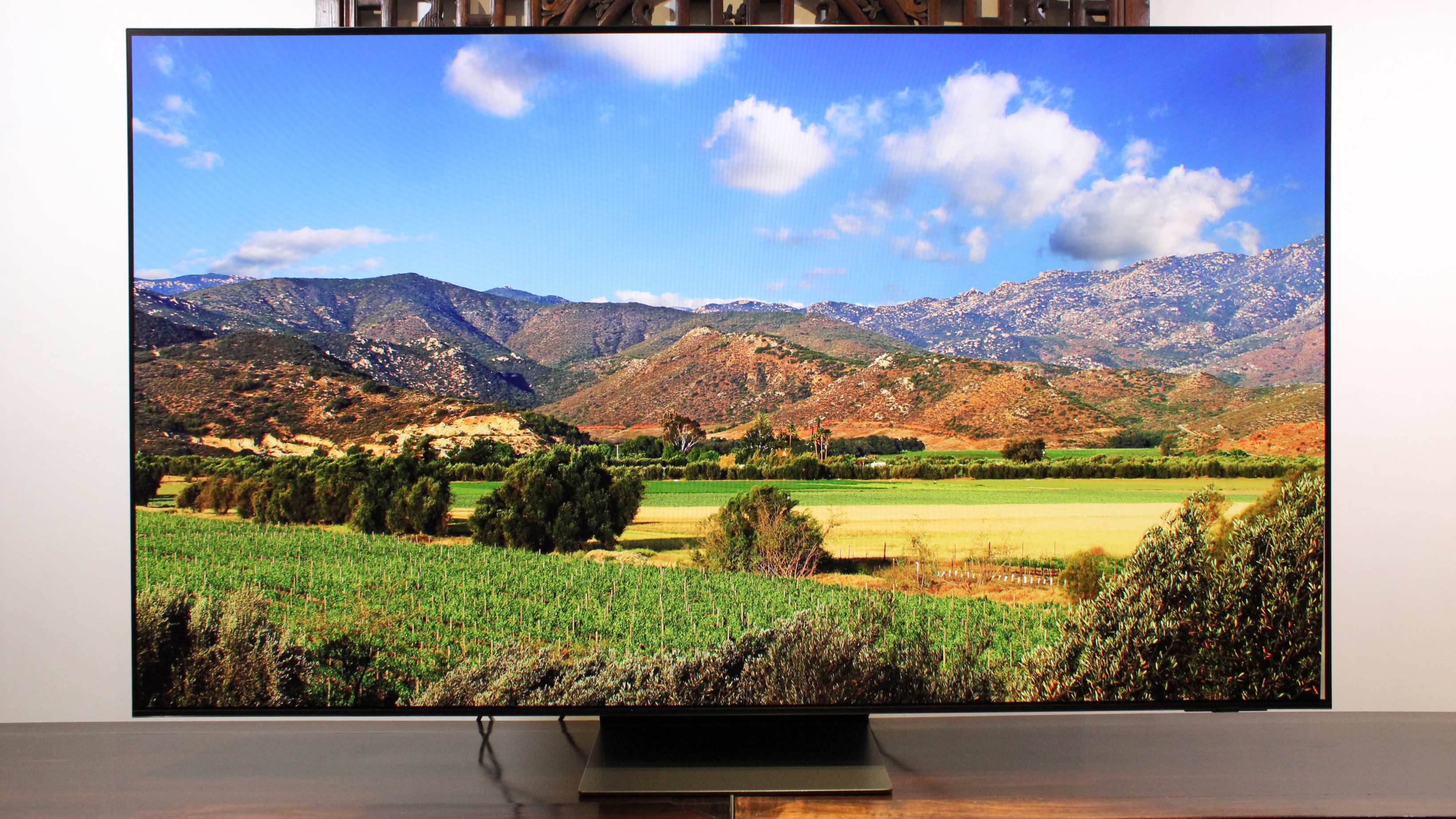
The Samsung S95D impresses right out of the gate, with a level of performance that proves the brand’s marketing claims are not mere hyperbole. The peak brightness measured 1,700 nits (on a 10% window), and 362 nits on a full-field image, which is not only remarkable for an OLED TV but would give most LCD models a run for their money – and they lack OLED’s superior contrast.
The self-emissive nature of OLED guarantees inky blacks, detailed shadows, pixel-precise highlights, and incredibly wide viewing angles – all of which make for a formidable 4K display. This is only enhanced by a very wide colour gamut that covers 123% of the DCI-P3 industry standard for HDR, allowing the S95D’s primaries to expand out into the even bigger BT.2020 colour space.
Perhaps more importantly, all this increased brightness and wider saturation is delivered in an accurate manner that matches the industry standards for video distribution. In fact, in its Filmmaker Mode the S95D produces a level of fidelity for both standard dynamic range (SDR) and HDR that’s so good it not only retains the original creative intent but might put a few professional calibrators out of business.
The new ‘Glare Free’ screen filter is nothing short of a revelation that borders on magic, and even when we pointed a torch directly at the screen there was hardly any reflection. The upgraded screen filter also ensures blacks remain black, regardless of the amount of ambient light in the room. In addition, the overall panel uniformity is excellent, with no apparent signs of banding.
As a result, the S95D delivers natural-looking colours, fine detailing, deep blacks, and well-rendered shadows. This also applies to HDR, where precise tone-mapping accurately tracks the standards when reproducing the darkest shadows, or the brightest highlights. The absence of any crush in the blacks or clipping in the whites ensures a picture with remarkable levels of contrast.
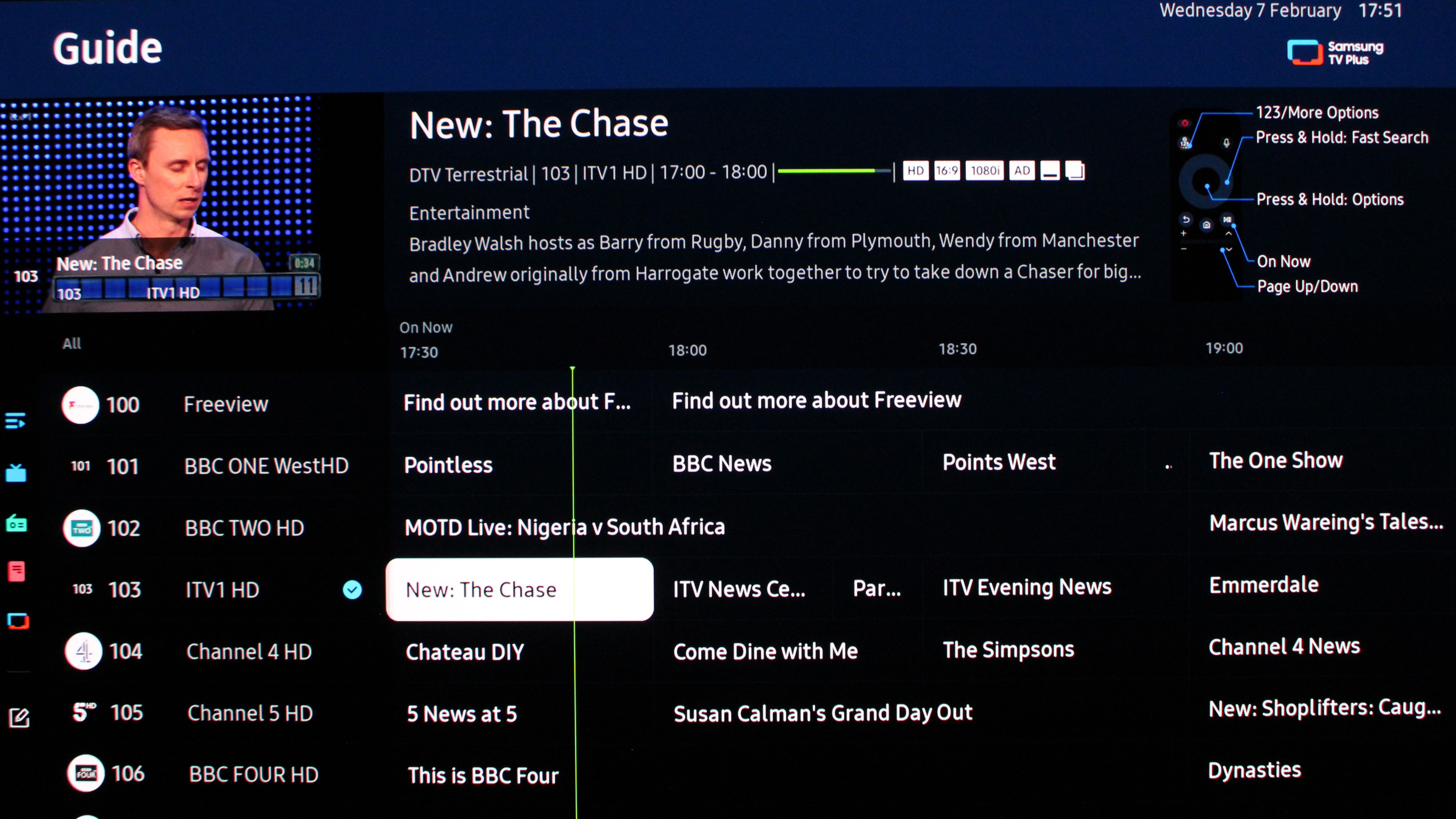
When watching HDR10 or HLG content there’s a choice of Static or Active settings, and the former tracks the standard precisely, while the latter analyses the HDR signal and adjusts accordingly. The Active mode has been upgraded for the S95D and its dynamic tone mapping works exceptionally well without introducing any unwanted clipping – very useful for overly dark HDR grades.
The NQ4 AI Gen2 processor combines with the superior contrast and enhanced colours to create 4K images that are bursting with fine detail, but also free of distracting artefacts. Thanks to this AI-enhanced imaging the S95D can upscale and enhance lower-resolution or compressed content with remarkable precision. So regardless of what you watch, this TV shows it in the best light.
All of these factors combine to produce amazing SDR images, and HDR that ranks among the best we’ve ever seen. The S95D not only redefines what an OLED TV can do, but also matches or even exceeds the capabilities of most LCD TVs, while simultaneously delivering the deep blacks and pixel-precise specular highlights that make OLED such an amazing display technology.
Finally, the motion handling remains excellent, with movies and TV dramas delivered at 24p without any unwanted judder or other artefacts. However, there’s frame interpolation available for fast-paced sports to keep the action clear, and support for 144Hz higher frame rate gaming.
SAMSUNG S95D REVIEW: DESIGN & USABILITY
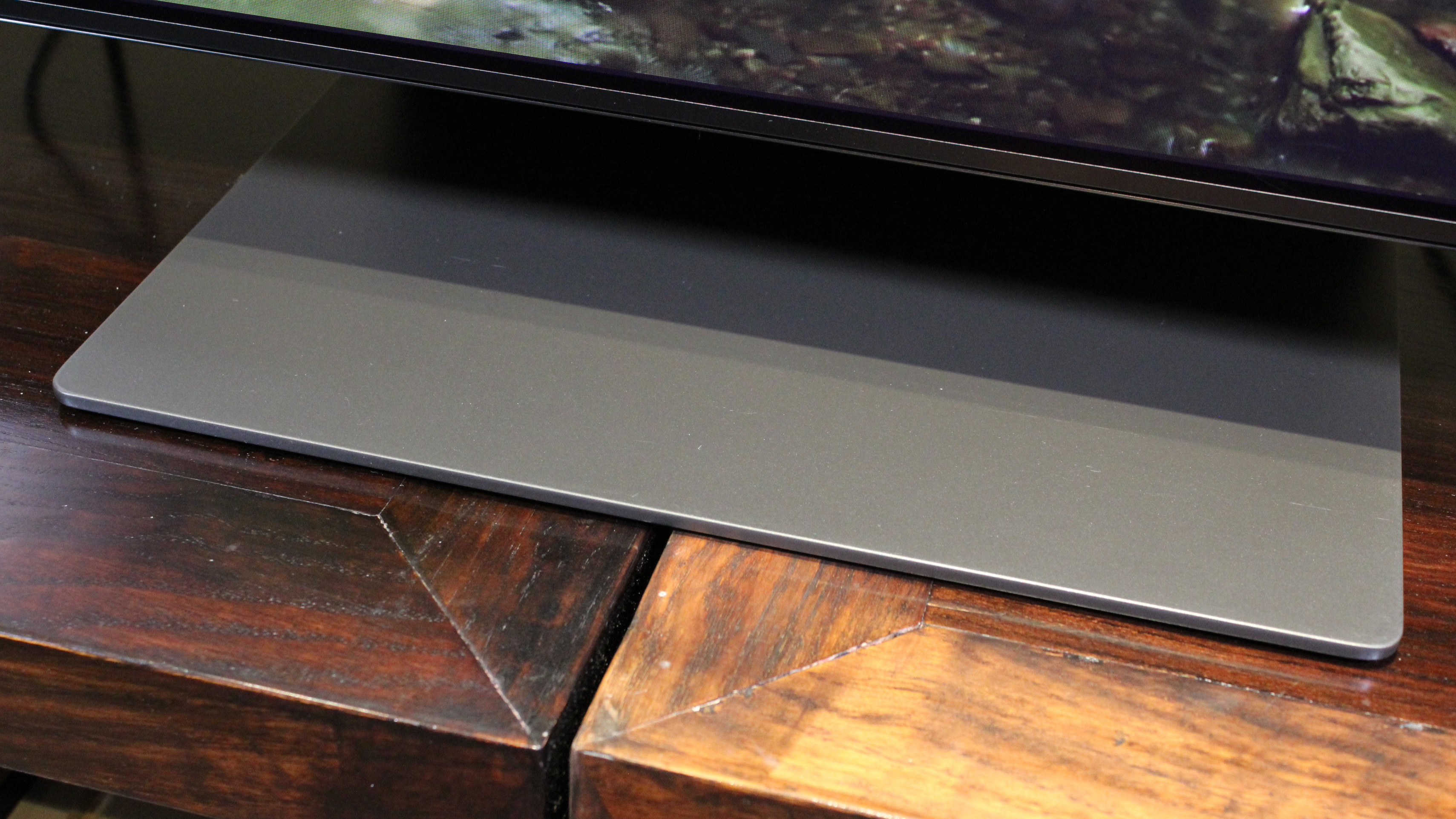
The Samsung S95D looks identical to last year’s S95C, but that’s a good thing because it remains a stunning piece of industrial design. The ultra-sleek Infinity One panel is only 11mm deep from top to bottom, but despite these size-zero proportions, the build quality and finish are excellent.
The all-metal stand provides solid support, while its small footprint allows the TV to be installed on narrower surfaces. You can also wall-mount if that’s your preference, and the S95D will look incredible thanks to its super-slim shape and single thin cable from the One Connect box.
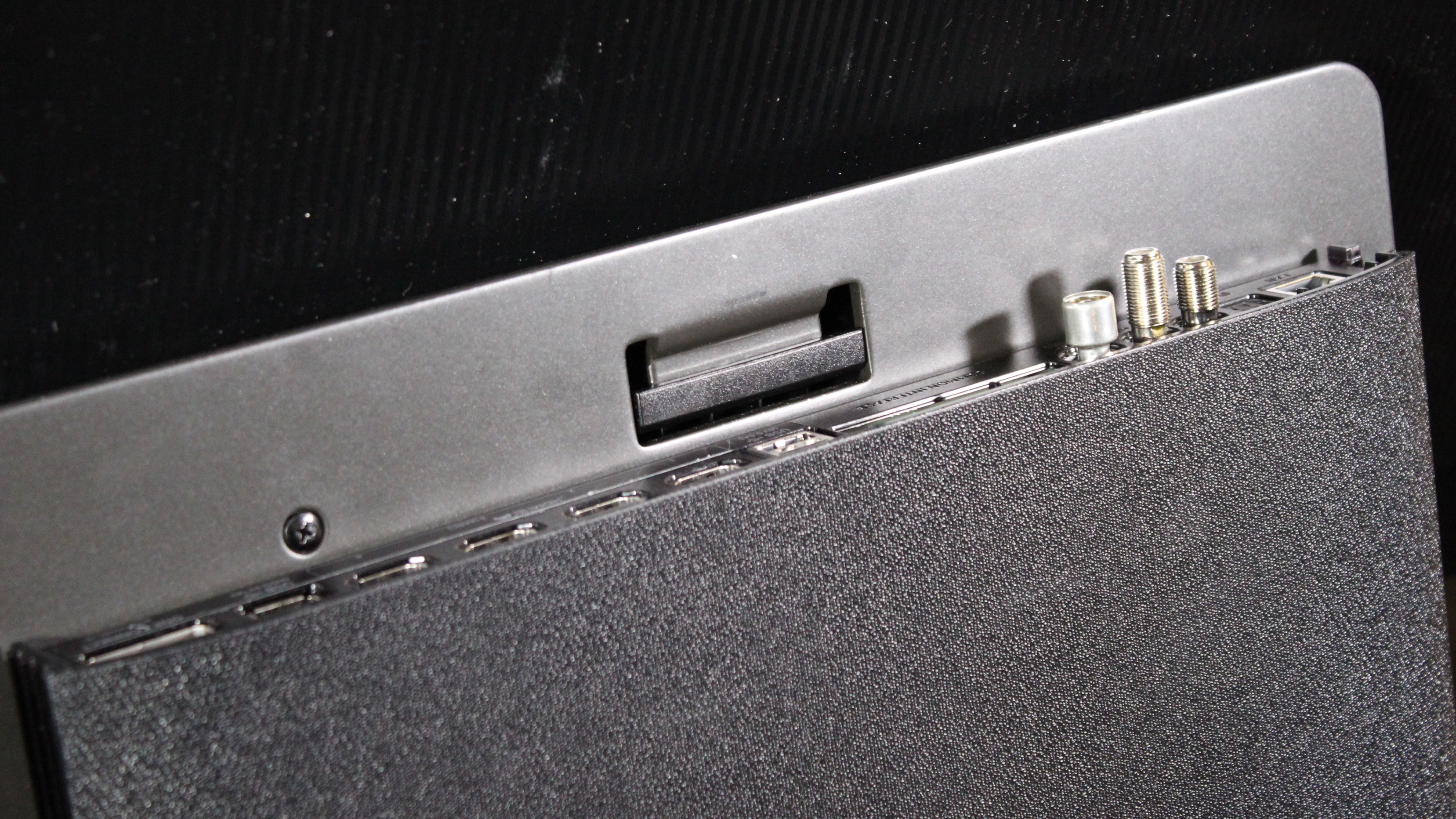
All the other cables are plugged into the box, which can then be stored away from the TV to keep things tidy. Although if you’re using the included stand there’s also the option to attach the box to the rear, thus keeping it out of sight but close enough to provide easy access to all the inputs.
As mentioned above: the four HDMI ports support 4K/144Hz, VRR, ALLM and every version of HDR apart from Dolby Vision. There are also two USB 2.0 ports, twin tuners, a CI slot, an optical digital output, and an Ethernet port. In terms of wireless connectivity there's Wi-Fi, Bluetooth and Apple AirPlay 2.
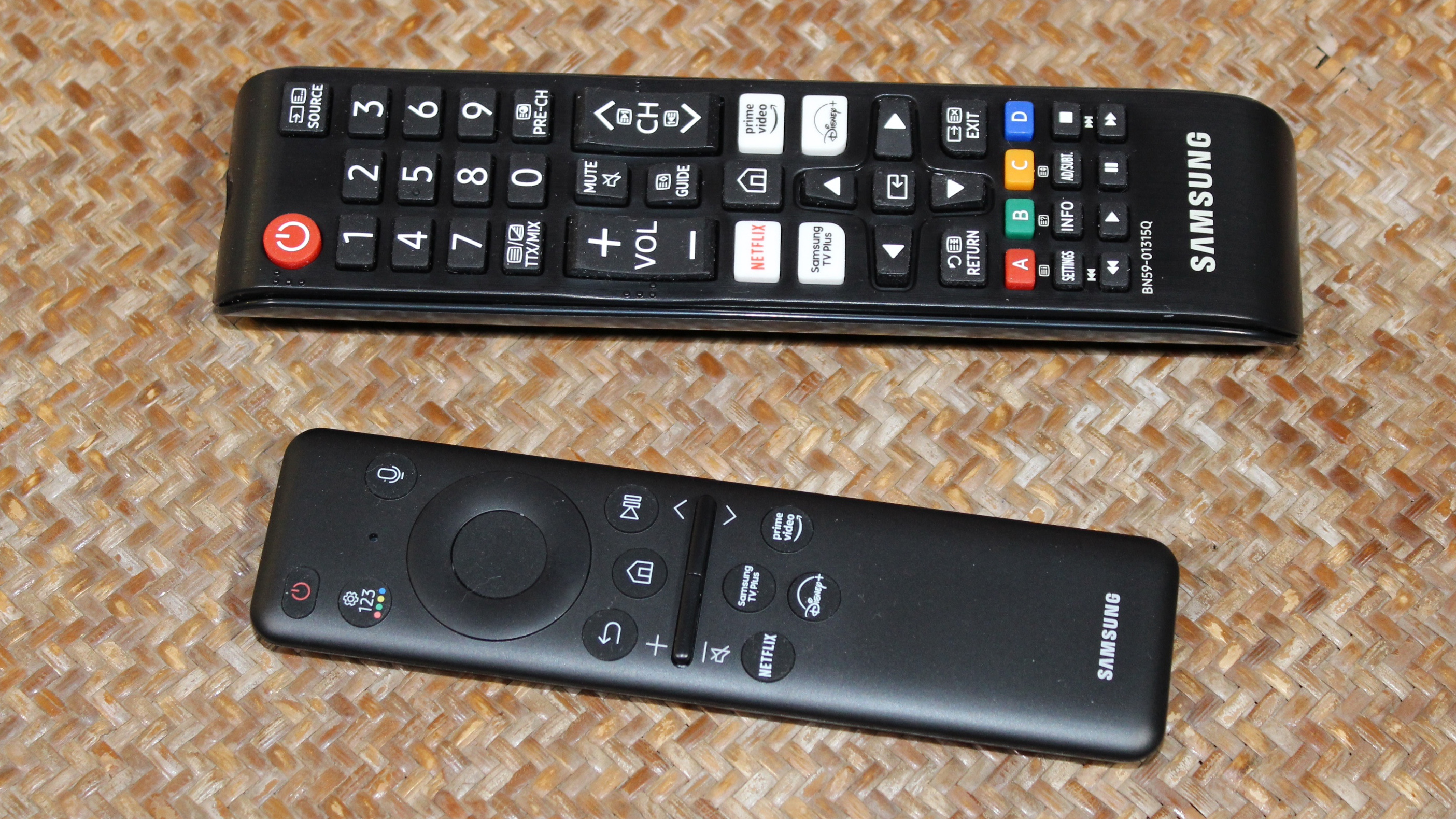
The S95D ships with two controllers: a standard black zapper and the Solar Cell remote. The latter offers a stripped-down choice of buttons that cover all the main functionality and control, plus there are direct access keys for Netflix, Prime Video, Disney+, and Samsung’s TV Plus.
In terms of other control options the SmartThings app provides improved accessibility and makes setup easier, plus there’s a degree of voice control thanks to built-in Bixby, and the ability to work with Alexa. You can even access Siri via Apple’s AirPlay 2 if that’s your preference.
The S95D sounds remarkably good considering its slender dimensions, and somehow Samsung manages to squeeze six drivers, six woofers, and 70W of amplification into the svelte panel. The overall delivery is well-balanced, with clear dialogue and a nicely defined midrange and treble.
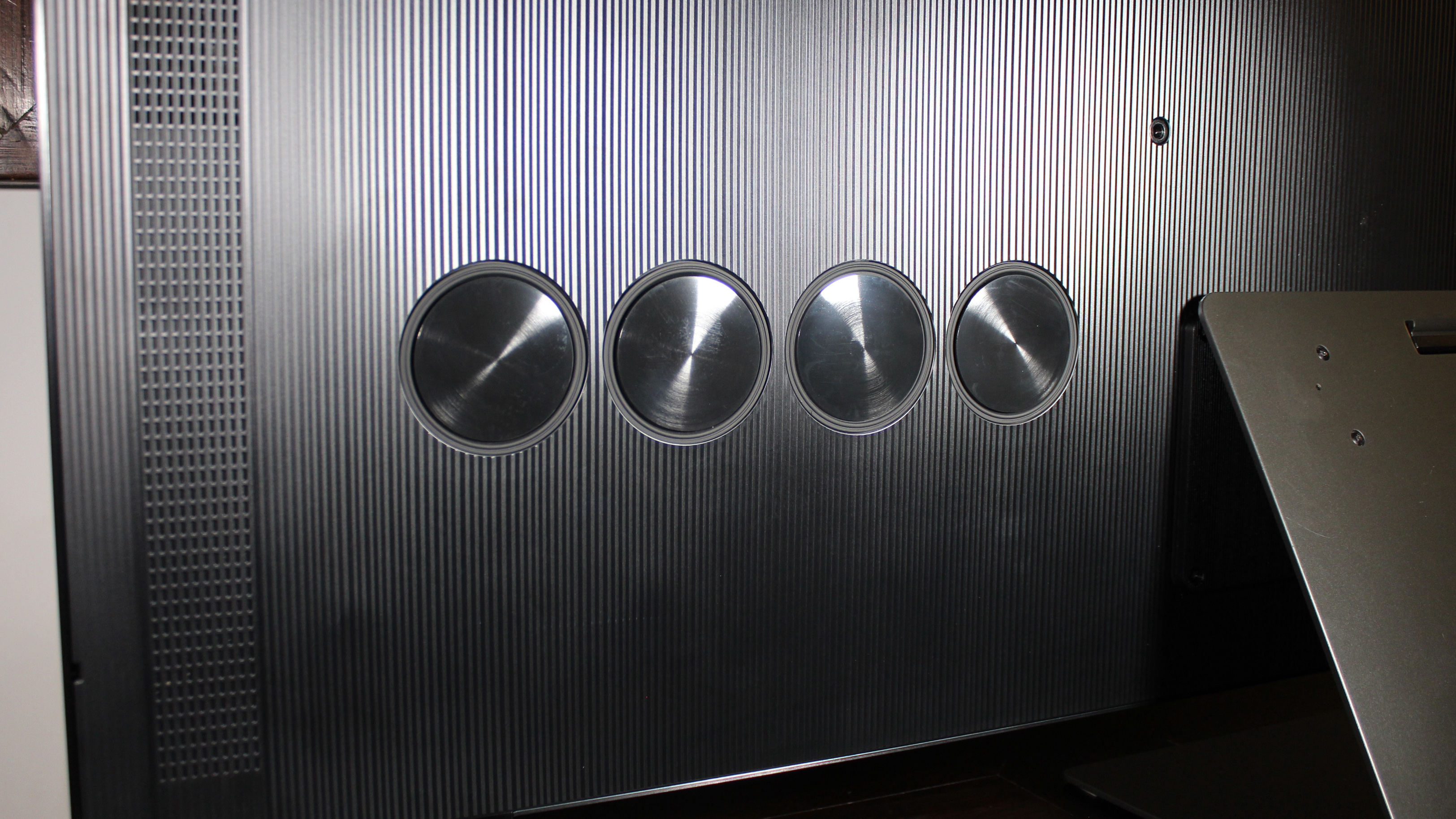
The Object Tracking Sound Plus (OTS+) processing certainly makes the most of the speakers at its disposal, producing an expansive soundstage with a sense of spatial awareness that gives the audio more dimensionality and moves aural cues to match the action on the screen.
While any soundtrack can be enhanced by OTS+ processing, it’s Dolby Atmos that produces the most immersive sonic experience thanks to psychoacoustic processing. There’s also a decent amount of bass considering the physical limitations introduced by the TV’s incredibly slim panel.
If you match the S95D with a Samsung soundbar that includes Q Symphony, you can synch the two, allowing them to operate in harmony. In testing this worked very well, with the S95D and new HW-Q990D automatically connecting and syncing to create a huge combined front soundstage.
SAMSUNG S95D REVIEW: VERDICT
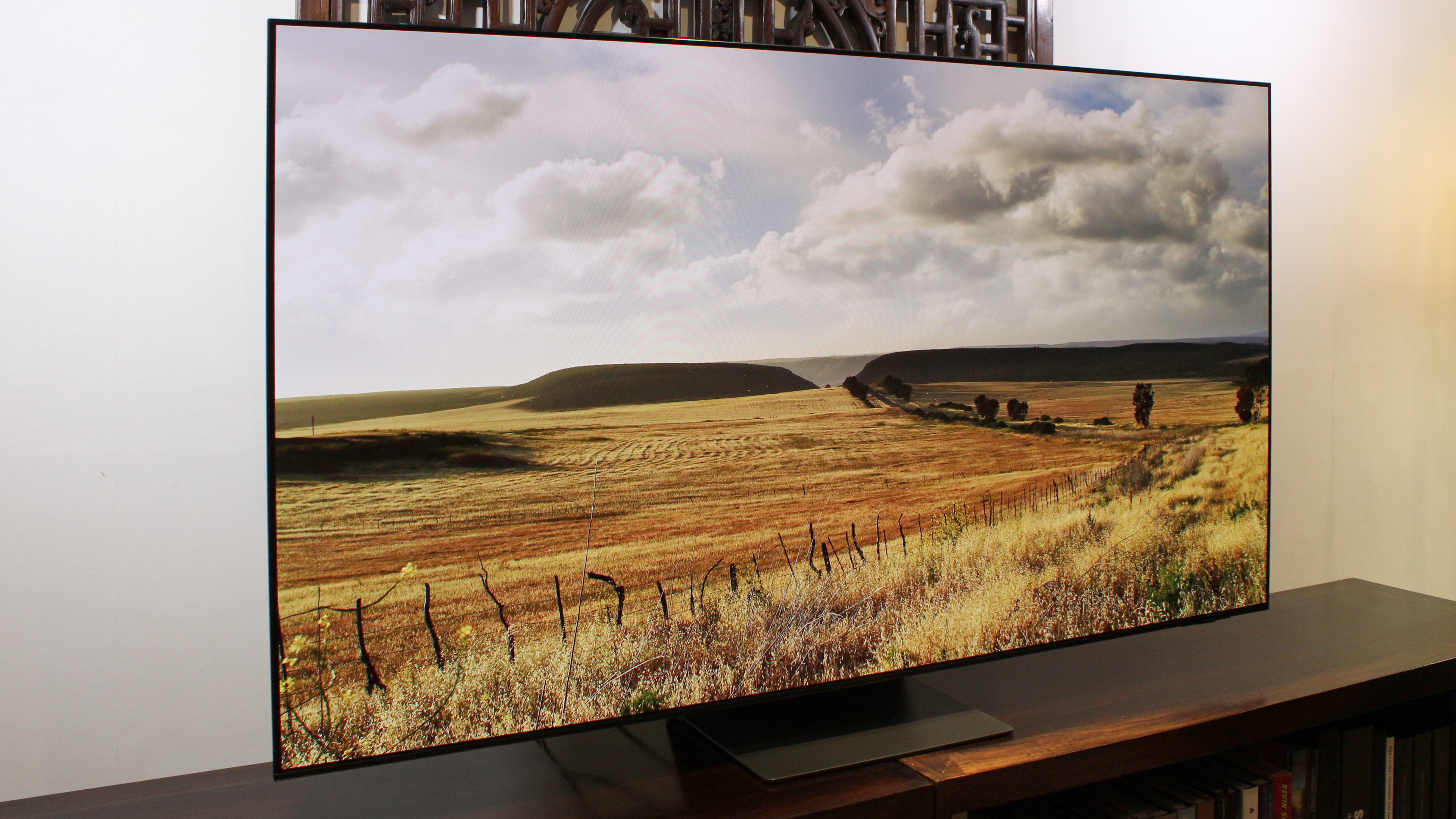
The Samsung S95D redefines the capabilities of an OLED TV, not just in terms of specular highlights, but also with full-screen images. The upgraded quantum dot-powered panel produces exceptional pictures that are incredibly bright, wonderfully colourful, and remarkably accurate. The result is high dynamic range (HDR) that’s among the best we’ve ever seen, rivalling any OLED and most LCD TVs.
Of course the S95D also benefits from OLED’s deeper blacks, better-defined shadow detail, pixel-precise highlights and wider viewing angles. A game-changing screen filter ensures superior contrast with ambient light thanks to less reflection, while peerless AI-enhanced processing makes the most of every last pixel in the 4K panel, squeezing out all the detail and eliminating noise or compression artefacts.
Once you include the stunning design, solid build quality and handy One Connect box and its extensive connectivity, you have a most tempting premium package. The sound system is surprisingly good considering the slim dimensions, the smart platform remains comprehensive, while extensive next-gen gaming features help make this high-end 4K OLED TV very hard to fault.
Also consider
The competition is still tough in this category, however, with the Sony A95L delivering a very impressive alternative that also sounds simply incredible. If you'd rather go with a classic 'WOLED' (rather than QD-OLED), however, then the LG G4 OLED looks like a stunning alternative.
Sign up to the T3 newsletter for smarter living straight to your inbox
Get all the latest news, reviews, deals and buying guides on gorgeous tech, home and active products from the T3 experts
Steve Withers is a professional calibrator and freelance journalist who regularly contributes to T3, reviewing audio and video products, and writing articles. Steve has been writing about audio and video products for over ten years and, along with T3, he also contributes to TechRadar, Trusted Reviews, Expert Reviews, AVForums, Pocket-lint, Home Cinema Choice, and Wired. Steve is Level 2 certified with THX, the Imaging Science Foundation (ISF) and the Home Acoustics Alliance (HAA). As such, he remains abreast of all AV technology developments and the latest industry standards as we transition into a new era in home video and audio.
-
 Polar’s new subscription feature lands in the shadow of Garmin’s Connect+ rollout
Polar’s new subscription feature lands in the shadow of Garmin’s Connect+ rolloutPR genius or timing disaster? Polar’s new Fitness Programme adds adaptive training to its ecosystem
By Matt Kollat Published
-
 New Orient Star watches offer a glimpse of the magic within
New Orient Star watches offer a glimpse of the magic withinThere are two new skeleton pieces
By Sam Cross Published
-
 Netflix's most surprising 100%-rated sci-fi series returns with gorgeous trailer
Netflix's most surprising 100%-rated sci-fi series returns with gorgeous trailerLove Death + Robots is back for more
By Max Freeman-Mills Published